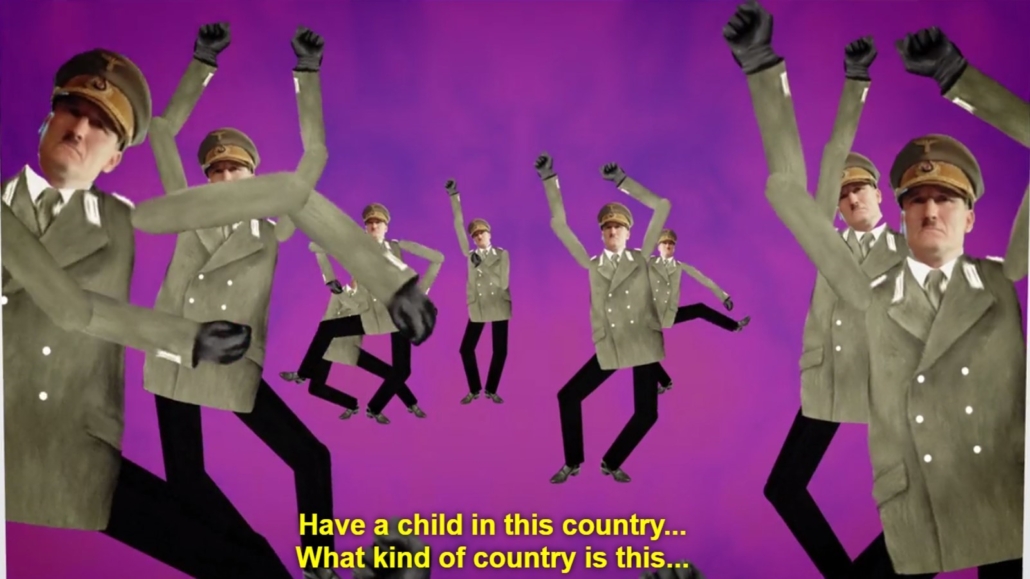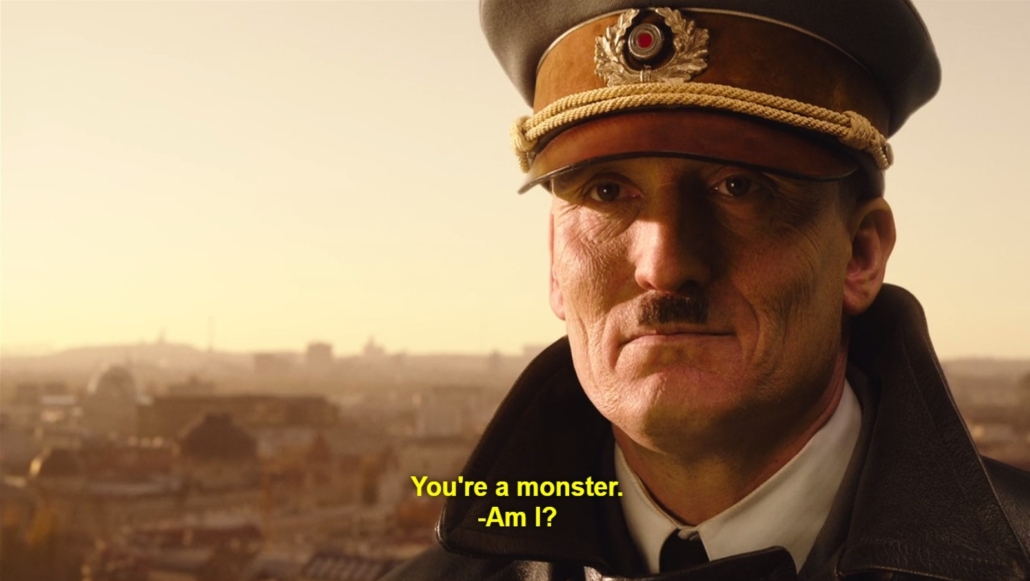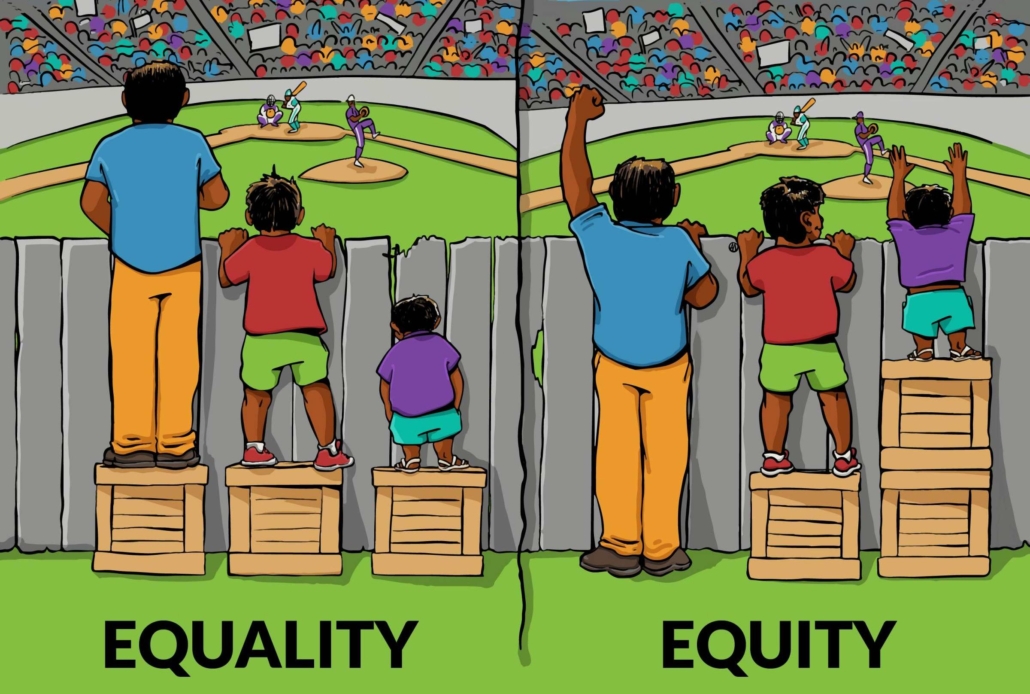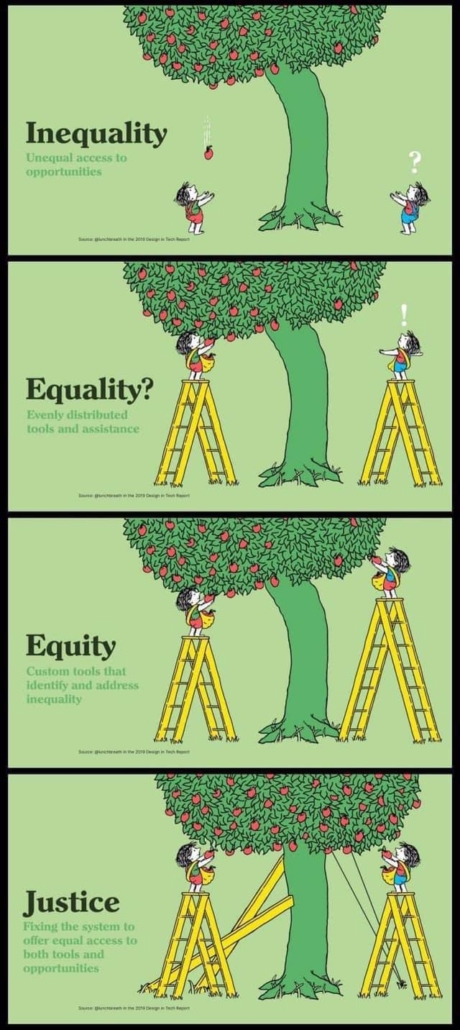Matthew Bracken’s Three “Enemies” Novels
This is a dead serious warning to our overwhelmingly White audience. All readers have seen the absurd claims about “domestic terrorists” — meaning White men — surrounding the Jan. 6 Capitol “insurrection.” Since then, all manner of outlandish claims have been made about the imminent threat tens of millions of White Americans represent to our beautiful, vibrant, multicultural “democracy.”
In short, this review serves as a warning to “majority Americans” (Whites) that all institutions in today’s United States, up to and including the Federal Government, are arrayed against not just the interests of Whites, but against the continued existence of Whites. Such a thought is hard to accept for many Americans, but the unraveling of American history since 1965 inexorably shows this to be true.
I appreciate that “ordinary” Americans — that is, White Christians as viewed prior to 1965 — could be skeptical of my claims that “their” institutions (which allegedly bestow upon them endless “White privilege”) have been turned and now serve The Dark Side, but it’s quite true. Of course, thanks to the broadcast career of the late Rush Limbaugh and four years of Trump rule, many Whites have woken up to the fact that the American media is overwhelmingly opposed to majority Americans, but it goes much further, I’m afraid.
Education, from elementary through university graduate school, is rabidly anti-White. The judiciary is strongly anti-White as well, as action against Charlottesville protesters and many other cases demonstrates. And the churches? Forget it. What about the police and especially the military? Well, we’ve seen for the last year how the police have been gutted, though whether they are even implicitly pro-White is open to much debate. And finally, the military. Though the process has been in motion for years, Joe Biden’s regime has rapidly ramped up the dispossession of the traditional American military, with this graphic announcement of who the new preferred defenders of the realm are:

28th United States Secretary of Defense
Yes, all of these institutions have turned on White Americans and it will only get worse, as daily news stories show:
The Associated Press WASHINGTON — President Joe Biden on Tuesday [March 29, 2021] nominated a racially diverse and overwhelmingly female group to federal and other judgeships, including three Black women for the U.S. courts of appeals, one pathway to the Supreme Court.

Matthew Bracken
What I intend to do today, then, is to share with readers a review of novels that fictionally take us through an experience where the anti-White government does not just want to dispossess Whites; it literally hunts and kills formerly valued members of the American population. These are stories of rogue government agents with a license to kill Whites, of affirmative action hires lording it over disempowered White men, and technology such as armed drones — overwhelmingly the product of White male minds and hands — now turned lethally on the White man himself. By reading these novels, you can then more easily imagine these events literally taking place. I want this to be the first step in realizing and accepting that you—all of you, but especially White males, who are descended from eons of Europeans, are now the intended target.
The author of these three novels is former Navy SEAL Matthew Bracken, born in 1957, who modestly describes himself as an “old frogman, boat builder, sailor, novelist.” Revisiting his novels, which were written from 2003–2009, I am amazed at the prescience of this former sailor, as his imagined scenarios could be ripped from the very headlines of today’s news. Thus, it is no surprise that since writing his “Enemies” trilogy, Bracken has been a frequent popular guest and a host of The Alex Jones Show; he also made numerous videos on YouTube, including this recent one. Bracken’s voice matters.
You can visit Bracken’s well-stocked website here for tens of hours of written excerpts and more. For now, let’s focus on the first and third
novels in Bracken’s Enemies series.

Novel 1
Appearing in 2003, two years after the 9/11 Terror attacks, Bracken’s first novel Enemies Foreign and Domestic introduces a vile government false-flag crime, a genre of conspiracy theory that has thrived since 9/11 (or the Oklahoma City Bombing of 1995 … or the Kennedy assassinations, etc. — take your pick). From the prologue onward, the prose is gripping, and Bracken has easily earned himself a place alongside action thriller writers such as Tom Clancy, Dale Brown or Stephen Coonts.
Of the many benefits of Bracken’s site, one of my favorites is his generosity with huge excerpts. (You can find the whole books online for free if you work at it; for others, you can go to Amazon or your local library.) These excerpts make it easy to copy and paste and are an excellent introduction to his writing. This is a good example illustrating his style, from the opening page of Enemies Foreign and Domestic:
The home team was set to receive the kickoff of their season opener. The 80,000 football fans packing the stadium were on their feet looking down at the two teams lined up on the verdant green field. … The crowd noise reached a sustained roar as they watched the kicker trot toward the teed-up football, they saw the two teams rush at each other, and they followed the flight of the ball high into the air.
In the midst of this jubilant bedlam, in the center of the western end zone upper deck, a forty-year-old architect from Annapolis was struck by something on the left temple. He immediately collapsed forward, spurting blood over his friends and several other fans as he fell across the seats below. His shocking injury occurred while the football was still arcing through the air and down the field, so at first the louder screaming of the fans surrounding his crumpled bleeding body went unnoticed by the rest of the crowd around them.
Every two seconds a similar scene was repeated with horrifying variations across the western upper deck stands, as one fan after another was dealt a sudden bloody wound to the face, head, neck, shoulder, arm or chest. A few victims were killed outright, and some were only slightly grazed, but many received searingly painful wounds which caused them to shriek and jerk and fling blood in all directions. Every two seconds another tableau of unexpected violent trauma was created, sending out radiating bands of fear as the shouted word spread from mouth to ear among the trapped thousands: sniper! The waves of horror emanating from each new victim spread and merged and multiplied until the entire western end zone upper deck section became engulfed in seething animal panic.
Noticing the commotion, the stadium video director focused on the activity and showed it on the fifty-foot-tall screens at the stadium, offering all 80,000 fans a view of a woman vainly trying to stanch the flow of blood from her dying husband’s face.
Police marksmen in Black scanned the stands for signs of the shooter, further alerting fans to an unfolding tragedy. The result was that mob psychology took over and hordes of screaming people rushed in unison toward the exit tunnels. Hundreds of bodies pushed against those unlucky enough to be seated by the safety railings.
The rails bent outward as the human avalanche gathered momentum, and then they buckled and victims began to tumble over. The falling victims were still holding tightly onto those above, pulling them over as well, and the solid cascade began. Dozens and then hundreds of linked victims fell past the VIP sky boxes, thudding down on the unfortunate fans packed into the lower stands ninety feet below.
In a surprisingly short time, a police helicopter had located the sniper in a building under construction a thousand yards from the stadium. Finding the shooter, a SWAT sniper aboard the helicopter put a single bullet though the murderer’s brain, killing him instantly. He was quickly identified as a White male military veteran, often homeless, and in possession of “white supremacist hate literature.” As it turned out, the White man was a patsy set up to take the blame for the massacre, while two government employees embedded in a federal agency had perpetrated the attack in order to give the government an excuse to limit the right of Americans to bear arms. This set off a powerful reaction among American patriots who wanted to rein in a wayward government. A revolution almost resulted.
Again, this appeared in book form eighteen years ago. Now factor in all the events since then, especially the last year. No wonder a character in the book says, “I just don’t know what’s happening in this country any more. I feel like a war’s coming.”
Enemies 1 features Brad, who is clearly Bracken’s alter ego, and his romantic interest, Ranya Bardiwell, a Christian Lebanese American raised in the home of a gun-shop owner who is early on slaughtered in cold blood by the same forces who killed so many at the football stadium. Ranya then becomes a sworn enemy of this murderous state.
Having grown up around guns her whole life, Ranya is both proficient in their use and knowledgeable about all facets of shooting. She puts this knowledge to use the night she returns home to the burned gun store and house, and discovers that her father’s murderers were federal agents, as proved by the spent cartridges she finds on the ground. “Ten millimeter with these marks on the brass and the dent on the top means the ‘FBI Special Edition’ MP-5. A night scope on top, and a sound suppressor. I’m guessing subsonic loads, for no sonic crack. It was the feds all the way.”
This discovery not only gives Ranya a motive for bloody revenge, it also elicits discussions about what government forces are willing to do to American citizens, which is the key message I am imparting in this essay.
Bracken spends the next few hundred pages spinning more drama, but the essential political issues have been covered. In the end, Brad, Ranya, and others kidnap one of the crooked agents, but another agent, Bob Bullard, escapes detection and is able to silence his hostage colleague. Unfortunately, Brad is also shot during the operation, and Ranya flees the region.
The action has played itself out in Bracken’s Enemies Foreign and Domestic, but it leaves one with the feeling that loose ends remain. Bullard, for example, is alive and well, a development that is of great importance in the next two Bracken novels. Further, as terrible as the events of Enemies are, the subsequent novels are far more horrific, more loaded with dystopian images of an America that Bracken fears is coming to pass.
Novel 2
I’ll be brief in my treatment of Bracken’s second Enemies novel, Enemies Domestic: The Reconquista. The action takes place in an American Southwest now ceded to those of Mexican ethnicity. In this novel, Bracken is not subtle about his views on the political correctness of modern America, inserting, stark examples portraying lesbians, for instance, as abhorrent. We learn that the new main male character Alex, an FBI agent, had his life destroyed when his wife Karin left him for a highly masculine female lover, Gretchen Bosch.
Karin works for the IRS, as does her new lover Gretchen, and when all three were attending the Federal Law Enforcement Officers annual picnic, the hulking Gretchen had attacked Alex with an aluminum baseball bat, causing Alex to protect himself by restraining her. For this, he has been charged with assault, a fact Karin and a feminist judge use against him in the child custody proceedings over son Brian. The female judge thunders at the defense lawyer,
Silence! I’ve heard enough. More than enough! The irrational homophobic attitude of your client is very well known to this court. He’s lucky he wasn’t charged with hate crimes after that picnic incident! If Special Agent Garabanda can’t deal with the fact that his ex-wife is dating a woman, that does not speak well to his stability nor to his socialization, not to mention his fitness to share in the raising of their son.
Bracken continues to mock the views of the “socially progressives” when, for instance, Alex objects to his wife dressing their five-year-old son in pink, and the wife responds that it is “orchid.” Continuing, she scolds, “We just think you’ve already done enough damage to Brian’s psyche, that’s all. You’ve tried your best to turn him into a little macho man, always playing with toy guns and wearing camouflage. Well, we’re breaking your chain of patriarchy. We’re not going to inflict another heterosexist creep like you on the world!”
As in all three novels, the action here is engrossing and is generally impossible to separate from actual news in the headlines of the last two decades. And now that Bracken has discussed his fictional Southwest, he will turn to the American South for his third novel, the subtitle of which is “Civil War 2,” which turns out to be appropriate for both the novel and today’s America.
Novel 3
Enemies and Traitors: The Greater Depression and Civil War Civil War 2 reintroduces Vietnam-era Green Beret Phil Carson, a character from the original novel. He is sailing through the Gulf of Mexico alone in his boat but a horrible hurricane has devasted the Gulf coast. Politically, the United States is a shambles, with the Southwest ceded to Mexicans, the Northeast and Great Lakes “a socialist nightmare,” and the South broken into parts under the control of a mulatto generalissimo and states absolutely devastated by massive earthquakes. Only the Northwest region remains free. And the White House is occupied by one Jamal Tambor, a thinly disguised stand-in for former President Barack Obama.
Carson aims for the free Northwest, but it’s a long slog. Soon enough, he ends up in a refugee camp in Mississippi, where a surviving surgeon recounts the last year:
We lost more than half of the medical staff, most of my colleagues, including a lot of old friends, and including my only son and most of his family. I can take you to see the mass graves! . . . Cameroon fever, bird flu, cholera, dysentery, beriberi . . . you name it, we fought it. We even lost thousands to pellagra. Pellagra!. . . It brings the four Ds: diarrhea, dermatitis, dementia and death — just from a lack of niacin, because of a shitty starvation diet with no protein. We were right back to square one, we went back a century in medicine . . .
North of them, what remains of the federal government is intent on bringing the states of Kentucky and Tennessee back under federal control, but White troops will not brutalize fellow Whites enough to accomplish this. Instead, the “true enforcers” are “contract battalions” recruited from “Nigeria, Pakistan, Bolivia, Kazakhstan, Turkey, Albania and a dozen other nations.” Carson learns all too well what this entails when he begins his trek into Tennessee.
Traveling alone on foot, Carson is no match for the power of even this reduced federal force plus foreign mercenaries. Set up this way, the plot allows Bracken to present a reverse picture of what Americans are more accustomed to seeing: Advanced American technology used to subdue Brown adversaries in places like Iraq, Afghanistan, and Libya. Now that same technology is turned on White American men, women and children.
Most prominent among these weapons are drones, which are employed against American civilians with terrifying results. Naturally, one of the missions on which drones (“unmanned aerial vehicles,” or UAVs for short) are used is surveillance. “In the areas slated for complete evacuation, the holdouts could be located by the UAVs and targeted for special action as needed, county by county.”
Bob Bullard is in charge of these tools and he has no qualms about employing them liberally. In one early scene, Bullard asks to see a video of a successful termination of an armed curfew violator. “In the first video clip, the infrared image of a man was clearly seen flitting in and out of the brush along a tree line. The man, hotter than his surroundings, was seen as a White figure walking against a dark background of trees and bushes.” He was quickly painted by invisible laser energy, then blown to bits by a one-pound charge attached to a rocket launched unseen and unheard from above. After the white-hot explosion, “the man was gone, replaced by scattered white hotspots on the ground.”
Bracken personalizes this targeted assassination by showing the dead man as a White father who has now left his only remaining child an orphan. Son Zack is experiencing the trials of Job himself. His father had been a survivalist who had seen the economic troubles coming and prepared for them. Unfortunately, tragedy was to be the family’s close friend. Deeply religious, they had expected God to protect them, but the floods and quakes and attendant flu had first taken twins Becky and Annie. “Becky had died first and Annie a day later, both drowning in their own lung fluids.
Zack and his family had prayed continuously, to no effect.” Then his younger brother Sammy slashed himself while chopping wood, but even the family’s most potent antibiotics had not saved him. His mother had a stock of pills for her depression, but when they ran out, the woes of the world overwhelmed her and, either deliberately or by accident, she and baby Sarah had fallen from a railroad bridge and drowned in the swift waters below.
One evening his father had slipped out of the house late, after which Zack heard a single bang — then waited in vain for his father to return. He didn’t find his father — what was left of him — until the middle of the next day. . . . His father had been blown to pieces, his powerful body shattered. Even his shotgun had been blasted into a bent piece of junk. Zack hid in the woods near the human fragments of his father, shaking, crying, and wondering what to do next. He also found pieces of rocket casing and what was probably part of a rocket tailfin knifed into a tree near the body. His father had been the one killed by the drone attack described above.
Tennessee is where the federal government, aided by non-White foreign mercenaries, is fighting the local White population. Carson eventually joins a band of White former soldiers and together they attempt to restore their liberty and freedom. Doug is a young fellow rebel, and Carson asks him, “So how did you wind up fighting a guerrilla war in Tennessee?”
Doug smiled wistfully. “It’s a long story. To start with, I was drafted. I was going to the University of Maryland, majoring in communications, but I had to drop out after my junior year because I couldn’t afford the tuition. Unfortunately I’m just a Category 7 — a healthy heterosexual Christian White male. That’s the bottom, the baseline. My tuition was tripled with no warning, so that was that. They pulled my student loan and I couldn’t get any kind of extension, so I was back at home living with my mom.”
Bracken is right about such a White male’s place in current American society.
Bracken is also astute regarding the way Blacks are manipulated by hidden powers to do the bidding of the Washington regime, predicting unexpectedly the antics of Black Lives Matter half a decade later. Doug describes his recollection of how his version happened:
It was shock therapy. Especially when the Poor People’s Party marched through Baltimore. There were already about a million of them camping out in Washington on the National Mall before the convention. When they took off walking to Philly, it was like a dam bursting. That was on Labor Day. Mile after mile of people with flags, signs, drums, musical bands on trucks — everything you can imagine. Police cars were escorting them, leading them up I-95. They closed the northbound lanes of 95 for something like twenty miles, for the whole time it took them to walk to Philly. …
Naturally, our own locals got into the spirit and joined the march. They took whatever they wanted from any stores along the way, and the police just watched. There was nothing they could do anyway, or it would have caused the biggest riot in history. It was legalized looting, that’s all it was. Legalized looting, all over Baltimore. “Redistributing the wealth,” they called it. We stayed locked in our house and watched it all on television. It would have been suicide to go out and see it in person.
Yes, Bracken champions the view that Black city dwellers are either one step away from being barbarians or actually at that stage, and in Civil War 2 we find mostly negative descriptions of Blacks and their behavior. The bulk of the discussions revolving around Blacks concerns their actions after massive earthquakes have turned Memphis into a living hell, narrated by Doug, the White rebel heard from above:
There was rioting and looting in St. Louis and Nashville, but the video coming out of Memphis was the worst. Video shot from helicopters. It was like the end of the world down there. It seemed like half of that city was unreinforced masonry — brick — and most of it went down. Even regular wood-frame houses were shaken to pieces. All kinds of natural gas lines go through there; it’s like a big energy corridor from the Gulf to the Northeast. Well, at least it was. The gas pipelines broke in a million places, and a lot of Memphis burned to the ground. Then it was the chemical plants. They had all kinds of chemical plants and fuel farms along the Mississippi, and the ones that didn’t burn spilled. It was a mess! And smack in the middle of all of that, a million people. No electricity, no drinking water, no gas stations or supermarkets open, roads blocked, bridges down. … You couldn’t imagine such a place.
It got worse. Another massive quake hit and destroyed even more of the city, and Doug just barely survived. Unfortunately, he was captured by a gang of roving Blacks:
You can’t even imagine how freaking scary it was. Thousands of birds were going insane, screaming and flying in every direction, just flying straight into things and breaking their necks. Lightning was striking all around us. The sky was kind of a sickly yellow from the chemical fires that were still burning over on the Mississippi River, and there was a new sulfur smell just to remind you that hell was opening up. You could smell it: the sulfur was so strong it burned your nose. It was apocalyptic, super-natural, anything you can think of like that — times ten. …
At this point, Bracken envisions savage behavior on the part of many Black citizens of Memphis. Starving, they have turned to cannibalism, and Doug is on the menu. “There were legs and arms hacked down to the bones,” Doug observes, “and a fire pit, with the big iron grill over it. There were even decapitated heads, set in a row. I was lying on my side, and I looked over and saw a severed head that almost seemed like it was looking back at me.” Doug continues, noting that “The cooking grill was a wrought-iron gate, propped up on angle iron legs that were driven into the dirt. There was a square hole in the cement, where they had built their fire. Now I could understand what they had been talking about. That’s why they had been pinching and squeezing me.” Such food even has a name in the novel: “long pig.”
The cannibals are Black, smoke a lot of marijuana, and get drunk. Further, the leader of the cannibals is fiendish looking, as described by Doug: “We were nose to nose. He looked like the devil himself, his eyes glowing yellow in the firelight.” When the leader addresses his intended meal, he says, “White boy, I’m gonna untie you, and then you gonna get all naked and give me them Army clothes,” so we know Bracken is quite aware of racial differences.
In all three of these novels, Bracken imagines that Whites have the gumption to stand up to the trials they face, but is he right about that? It seems like the bulk of Whites — even in this current year — refuse to face reality. I mean, do Whites read what Paul Kersey writes about crimes against Whites? If they do, does it mean anything to them?
Take, for instance, Kersey’s recent discussion about United Airlines intending to replace new White male pilots with women and non-Whites. Without a doubt, Kersey is right to conclude, “Nothing else to say. Every segment of American society is anti-White, to the detriment of the society White people uniquely created…. America, as presently constituted in its extreme anti-Whiteness, is irredeemable.”
Paul Craig Roberts, who probably qualifies (with great justification) as a grumpy old White man, has also forcefully pointed out the same thing. “It is the White liberals in the Democrat Party and their presstitute propaganda machine— New York Times, CNN, NPR, Twitter, Facebook, YouTube, and the rest of the presstitute whores — that comprise the new Nazi movement. The only difference is that this time the target is White gentiles.”
Roberts continues: “The demonization of American White people is a hard undeniable fact. They have been discriminated against for decades because of racial quotas in university admissions, hiring, and promotion. But now discrimination against Whites has become persecution, and it is more scary….”
Can today’s Whites survive?, Roberts asks. “They cannot. And they sit there, insouciant, sucking their thumbs, sheep ready for slaughter.” Reread this sentence three times, then reflect on it seriously.
Another time, Roberts concluded, “White Gentile Americans Are Today’s Untermensch.” Is he wrong? Over a decade ago, Bracken was making these arguments in his three Enemies novels. But Bracken had faith that enough Whites still had the spirit and strength to stand up for themselves and the country their White ancestors had created. I wish I could be as certain. Perhaps by reading one or more of Bracken’s novels, more Whites will finally realize the mortal situation we all face. Then the time will come to either whimper and die — or finally stand up and fight.
And with those words, I have prepared the way for my next review of novels: those of the late Harold A. Covington, whose five Northwest Novels were for a time the center of great discussion about The War on Whites and how Whites might fight back.

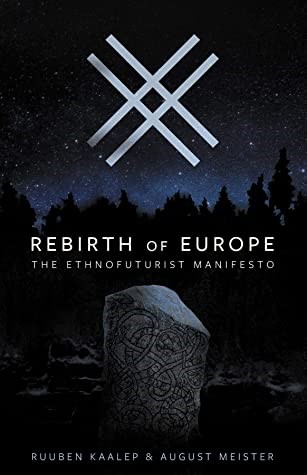
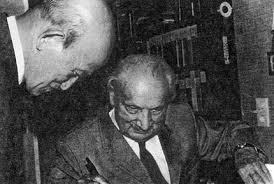
 Look Who’s Back is the English title for a German movie released in October of 2015. Dealing with the hypothetical return of Adolf Hitler in contemporary Germany, the film, based on a 2012 novel, was quite successful. While the movie reached the number one rank in Germany in the third week after its release, the book has sold over 1.4 million copies and has been translated into at least 41 languages.
Look Who’s Back is the English title for a German movie released in October of 2015. Dealing with the hypothetical return of Adolf Hitler in contemporary Germany, the film, based on a 2012 novel, was quite successful. While the movie reached the number one rank in Germany in the third week after its release, the book has sold over 1.4 million copies and has been translated into at least 41 languages.

